Review: Samsung Galaxy Light for T-Mobile
Dec 13, 2013, 8:18 PM by Eric M. Zeman
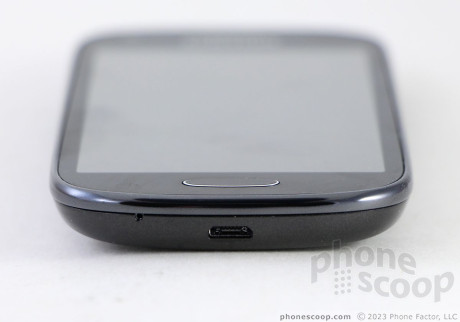
Samsung offers a smaller handset for the phablet averse with the Galaxy Light, an Android phone for everyman.
Form
Is It Your Type?
Samsung has updated the Galaxy Exhibit with LTE, NFC, and a better screen and changed the name to the Galaxy Light. This warmed-over smartphone is a pocketable device that offers reasonable performance for the price. If you're in the market for a less-expensive phone and happen to prefer Samsung's treatment of Android, the Galaxy Light has but a few shadows.
Body
If there's one thing you can say about Samsung, it would be that its phone designs are consistent and recognizable. The Galaxy Light bleeds Samsung blood through and through, from the curved edges to the home button to the materials. It's also one of the more compact devices available at the moment, which should appeal to those who have small hands or who dislike phablets.
The Light is squat almost to a fault. It's short and somewhat tubby looking thanks to its thick front-to-back dimensions. It borders on simple, but offers just a touch of class thanks to some thoughtful design choices made by Samsung. For example, the grill covering the earpiece is silver-colored, as is a thin rim that outlines the Home button. The Light doesn't have the chrome-esque band encircling the front face like the Galaxy S4 mini, but the material used to frame the display has its own texture and color that creates a similar effect.
It's quite comfortable to hold and use the Light, thanks to the size and rounded shape. All of the surfaces are glossy and smooth, and the edges are gently curved. There's a bit of an edge where the glass on the front meets the sides, but it's nothing terrible or uncomfortable by any stretch. It feels solid and well made. The materials may be the same cheesy plastics that Samsung has been using forever, but the phone is assembled tightly. It has a nice weight to it. The Light will easily slip into most any pocket.
The Galaxy Light is proof that not all glass is created equally. The black panel that covers the display is more prone to collect fingerprint slime than most other devices I've reviewed this year. It's quite gross and requires constant cleaning. Ick. The physical Home button below the display is quite easy to find by sight or by thumb thanks to its shape. The travel and feedback is pretty good. There are capacitive buttons for Menu and Back on either side. As with most Samsung devices, the capacitive buttons don't stay illuminated long enough for my taste.
The volume toggle is on the left edge, very close to the top. The profile is excellent and the button is a cinch to find. I didn't care for the travel and feedback, though, which is one of the few things about the Light that feels a bit cheap. The screen lock button is on the right edge. It has a small profile and travel and feedback were a bit mushy. The stereo headphone jack is on the top and the microUSB port is on the bottom.
Like most Samsung devices, the battery cover forms the entire rear panel of the phone. It has a bit of a brushed metal look that should be familiar to anyone who's seen a newer Samsung phone in person. The cover peels off easily enough. The battery itself can be removed, which has become a special "feature" to look for nowadays. The SIM card and memory card slots are stacked vertically. You have to yank the battery to access the SIM card, but the battery can remain in place if you only need to grab the memory card.
The Galaxy Light may be a little bit light in the personality department, but it manages to look good all the same. Toss in the comfortable form factor, and you have a winning combination for those preferring a smaller phone.
Performance
Screen
The Light's 4-inch screen is a smidge bigger than the outgoing Exhibit's 3.8-inch screen, but it has the same 800 x 480 resolution. It's a decent screen, but it doesn't set my heart aflutter. My eyes have been spoiled by full HD screens, which leaves the Light's display looking hazy and cramped to me. There's no question that on-screen elements lack sharpness and fine detail. Colors look good, though, and it is certainly bright enough for use indoors and out. Keep in mind that you need to clean the glass, especially when headed out.
Signal
The Light supports T-Mobile's LTE network, but it wasn't that great at connecting to it. The Light didn't have any trouble with T-Mobile's HSPA network; it consistently connected and pushed through most calls on the first dial in even the worst coverage conditions. Data speeds over HSPA were pretty good. Despite being tested in an area with solid LTE coverage, the Light bounced back and forth between LTE and HSPA when other T-Mobile devices remained attached to the LTE network in the same spot. Further, the Light is very susceptible to signal attenuation when gripped tightly around the middle. In other words, I found the phone had more trouble connecting calls when my hand was wrapped all the way around it. If you hold the sides with just your fingertips, it seems to work better. You can see the signal drop when you hold the phone. (This issue is common to many phones, but the Light seems to suffer more than average.)
Sound
Calls sounded very good through the Light's earpiece. Voices came through loud and clear. I was easily able to hold conversations in noisy stores while holiday shopping. Only the loudest shrieking from nearby kids was able to overcome the earpiece. Those with whom I spoke through the Light said I sounded very good, too. The speakerphone also works quite well. I would have preferred a bit more volume, but the clarity and tone of calls was worth the lower volume. It performed best when placed on a flat, hard surface. The ringers and alert tones were loud enough for most environments, but the vibrate alert is pretty weak. I missed a few calls because I couldn't feel the Light vibrate in my pocket when out and about.
The Light supports T-Mobile's Wi-Fi calling, which lets you conduct voice calls over your home wireless network. As far as I am concerned, there was no difference in the quality of calls when comparing those made over the cellular network and those made via Wi-Fi. They were equally good.
Battery
The Light packs an 1,800mAh battery that gives it enough power to get through most days. If I unplugged the device at 7AM, it generally lasted until about 10PM with moderate use. Heavy use had an obvious impact, as I was able to drain the battery by 7PM on several occasions. Most people should be able to get through a full day with the Light, but it wouldn't hurt to have a spare charger available at the office or in your car.
Basics
Menus
The Light runs Android 4.2 Jelly Bean with Samsung's TouchWiz user interface dominating the look and feel of the phone.
The lock screen supports up to four shortcuts that will work with or without a security lock. You can also choose to have a personal message, clock, and live weather on the lock screen.
There are five home screen panels activated by default, but those can be deleted or added to at whim.
The main app menu is fairly flexible. The default view is of a four by five grid of apps all arranged alphabetically. Apps can be rearranged in any order you wish, as well as viewed in list form, or dropped into folders.
The pull-down notification shade includes toggles for the different radios on the device, such as Wi-Fi, Bluetooth, and GPS. You can arrange the toggles however you like. The notification shade also provides access to the brightness setting, full settings menu, and of course all your alerts.
The settings menu is spread out across four screens, which I find annoying. This is something Samsung has done with many of its devices this year. It means more work to find the exact setting you want to adjust.
Novice users might want to consider using the "Easy Mode" home screen setting, which makes icons and text bigger, simplifies the menu screens, and cleans up all the clutter. The downside is that you lose access to cool and helpful features such as home screen widgets.
In terms of performance, the Light didn't have any problems. It has a quad-core 1.4GHz processor that provided more than enough power to run apps smoothly.
Calls and Contact
Samsung has gifted the Light with the same powerful phone application from its high-end devices. It's got a software dialpad, with tabs that run across the top for accessing the call history and contacts, but advanced settings are hiding under the menu button. For example, you can turn on/off noise cancellation (which improves outbound sound), as well as dial in your own preferences for volume, clarity, and warmth. Of course, the Light lets you customize call-rejection messages, as well as control how the phone answers/ends calls.
The contacts app, which is really just a tab within the phone application, is as feature-rich as any other modern smartphone. For example, you can set a direct access shortcut on the home screen that includes the contact's most recent social network status update. There are also two different home screen widgets that collect your favorite contacts in one place on the home screen. Adding and editing contacts is easy, and the Light will sync with most any online contact service.
Messages
The Light offers the stock Gmail, email, SMS/MMS, Hangouts, and Google+ apps. Together with their associated widgets, they make an impressive arsenal for reaching out to and connecting with your friends, family, and colleagues. The Light includes the old Android SMS app, but you can choose to set Hangouts as your combined SMS/IM app if you want to. It takes a bit of getting used to, in my opinion, and isn't as intuitive as it could be. Feel free to stick with the old SMS app if you want.
On the social networking front, neither Twitter nor Facebook is pre-loaded. You'll have to install them yourself. Samsung's ChatOn cross-platform messaging app is also MIA.
Extras
Media
The Light comes with the Google Play apps for purchasing and consuming music, movies, books, and magazines. The stock music and video players are also on board, and do a fine job of playing back any content you might have sideloaded onto the Light yourself. The stock YouTube app is available, too.
Samsung's Media Hub is on board, as well. The Media Hub is an alternative place through which to purchase and/or rent movies, television shows, and music. It works fine, but requires a Samsung user account. I don't think the selection is quite as good, and it's a bit less intuitive to use than the Google Play Store.
T-Mobile has crammed its own Music Hub and Live TV services onto the Light. The Music Hub offers free music streaming if that's how you (rock and) roll. T-Mobile's Live TV service cost $10 per month and lets you stream live and pre-recorded television content over the network. The selection includes programming from stations such as EPSN, Disney, and Nickelodeon. The performance of the app was mixed over T-Mobile's HSPA+ network. I didn't see a noticeable improvement when tested over LTE.
Camera
The Light includes a 5-megapixel shooter. The phone does not have a dedicated camera button, but the camera can be launched via the lock screen shortcut.
Surprisingly, Samsung ported the capable camera software from the GS4 and Note 3 to the Light. This is good news, since Samsung's camera software is fairly easy to use and lets you flex some creative muscle. It doesn't include all the features, but with shooting modes such as Beauty Face, Sound & Shot, Panorama, Sports, Night, and Auto, you still have plenty of options for customizing your shots. The modes can be accessed via a carousel that explains what each does, or through a grid of thumbnails.
The Light has some controls positioned in the upper left corner. You can customize what appears there, such as the flash or front camera button. The full settings tools need to be accessed by pressing the capacitive menu button next to the display. The settings provide a decent amount of control over the camera's behavior, such as metering, white balance, exposure, and so on.
In all, the camera performs well. It takes a second to open and is a little slower to focus than I'd like, but other than that it is fairly snappy.
Photos
The Light's camera didn't surprise me when it came time to examine the results. For a 5-megapixel camera on an inexpensive smartphone, it's nothing to complain about, but it certainly doesn't impress. Images are passable. Grain creeps in something fierce when shooting in low light. Using the Light outdoors produces the best results, but that's not surprising. Images are sharper and more colorful outside. Indoor shots often looked washed out. The flash casts a blue pall over images rather than truly helping with the exposure. I'd take a dedicated camera with me on vacation rather than use the Light to capture all my experiences.
Video
The Light is limited to recording video at a max resolution of 720p. The results are ok, provided you have good lighting. Don't bother shooting video in the dark, you'll only get grain-laden smears. When shooting properly lit subjects, the Light does manage to get white balance and exposure right, and all the video I shot was in focus. Again, it's not the best device for recording important events, but acceptable in a pinch.
Gallery
Samsung relies on the stock Android gallery app for the Light. It's a fine tool for managing your photos and comes with a handful of simple editing features, such as crop, rotate, filters, and so on.
The Light also comes with the new Photos+ application. (It is worth pointing out that Photos+ app will eventually replace the stock Android gallery app. In fact, it already has on the most recent devices sold directly from Google's web site.) The Photos+ app is a brighter, more cheery app for managing your photos and has all the same editing functions that the regular gallery app has. The big difference is that it interacts with, and is meant to help control, your Google+ photos. You can set auto-upload behaviors as well as use the Auto Awesome tool to improve your photos or create animated GIFs.
Which ever of the two gallery apps you care to use, all your photos populate both.
Apps
The Light comes with a typical mix of Google, Samsung, and T-Mobile apps. You can't delete most of the pre-installed apps, but you can at least hide those you don't use. Either way, there's plenty of on-board storage for your own apps. The Samsung App Hub is available if you want to see which apps Samsung recommends for the Galaxy Light. Samsung's S Voice and S Translator apps are on board. S Voice is for controlling the Light with voice commands, and S Translator can translate text from one language to another using the camera. S Voice functions well enough, but I'd recommend you skip it and stick with Google Now, which is available on the Light. Google Now is far superior. S Translator also works well.
Bluetooth
The Light's Bluetooth radio worked well. It paired and connected with every device I have sitting on my desk. Phone calls sounded very good when routed through a headset, as did music when played back through my favorite stereo Bluetooth speaker. I was easily able to pass files directly to other devices, as well.
Browser
The Light ships with the standard Android browser and Google's Chrome browser. Both browsers are highly capable of rendering attractive web sites. Chrome offers a few more features than the stock browser, but as far as how web pages look, they are on even footing. The Light was acceptable on T-Mobile's HSPA network, but not the fastest device by any stretch. Browsing over LTE didn't really improve the experience when compared to HSPA.
Clock
There's a white digital clock on the lock screen. It's big enough to be seen at an arm's length, but the style of the lock screen clock cannot be adjusted. You can, however, choose from three different sizes to make it even more visible if you wish. That's cool.
GPS
The Light has Google Maps for navigation. The GPS radio worked really well. It pinpointed me quickly, though accuracy varied between 25 and about 50 feet. I didn't have any trouble routing directions between points. The app ran fine on the Light with no issues.
Wrap-Up
The Samsung Galaxy Light sells for $240 at full price. You can also choose to finance the Light for just $9 per month with $0 down. Considering what the phone offers - and doesn't offer - that's a fair price for the whole kit and kaboodle.
In the plus column, the Light is easy to use, well made, and offers excellent call quality. The Android operating system runs perfectly, even with Samsung's UI customizations, and it has powerful calling and imaging tools.
In the minus column, the Light offers only average battery life, isn't strong over LTE, takes average photos, and doesn't have the sharpest display.
There are plenty of bigger, better phones out there, but they cost more and can be more difficult to use. If you value size (or the lack thereof) over everything else, the Samsung Galaxy Light is worth a look.
Comments
Thanks!


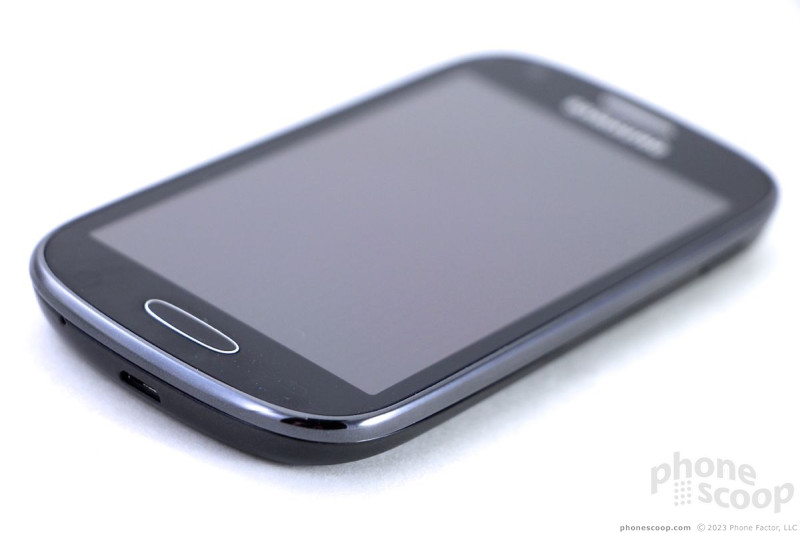













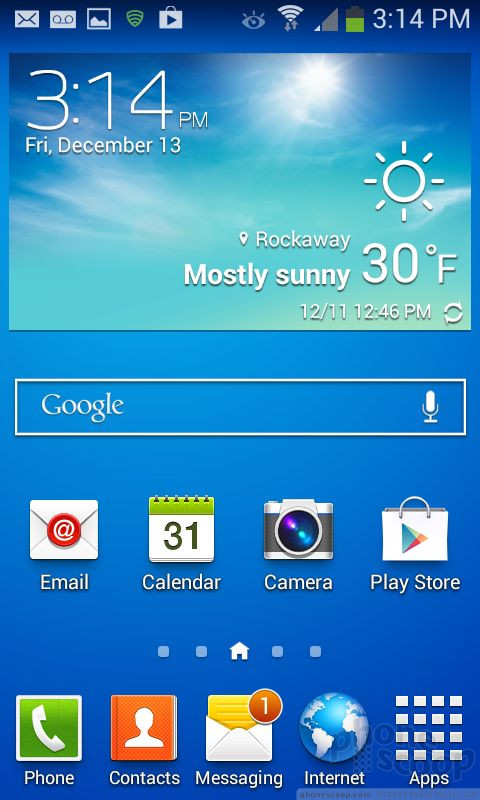






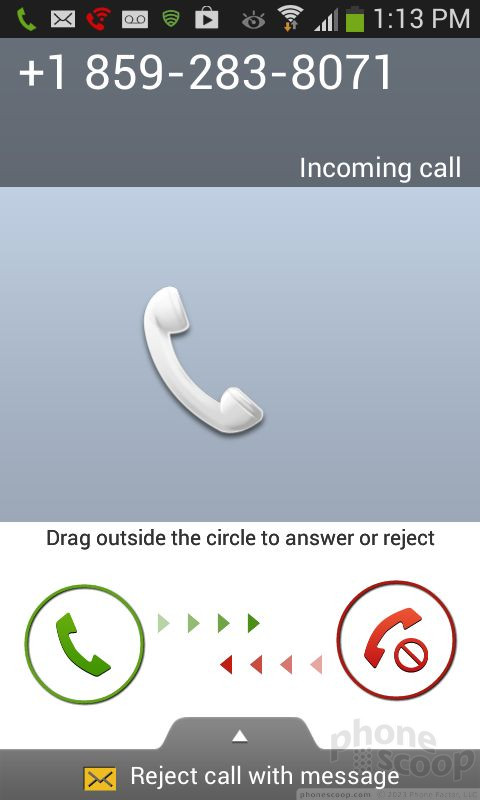









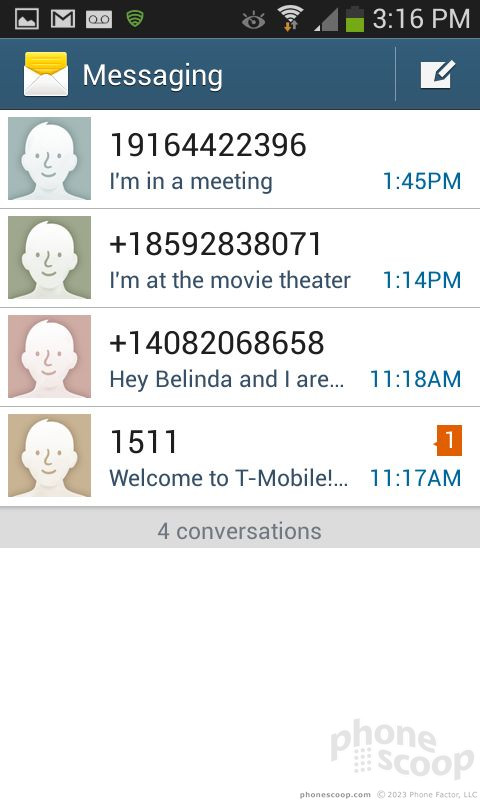




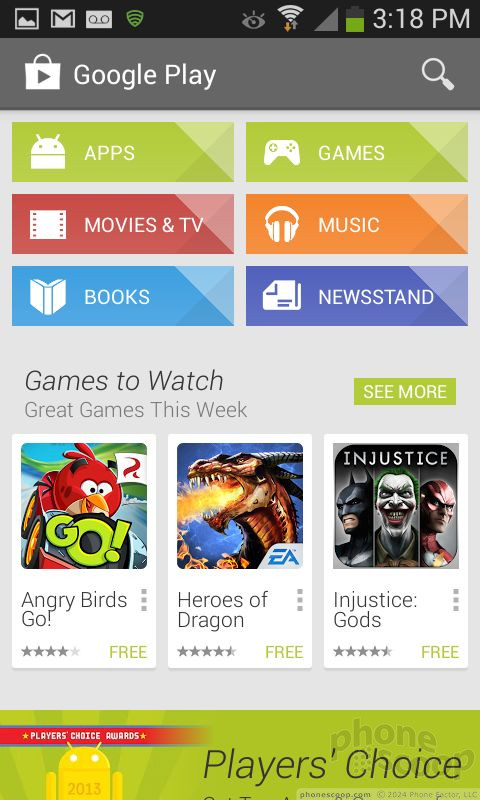






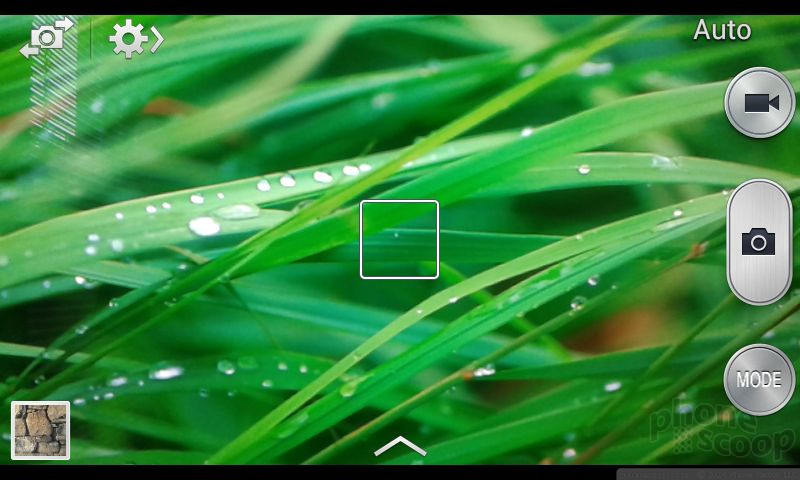





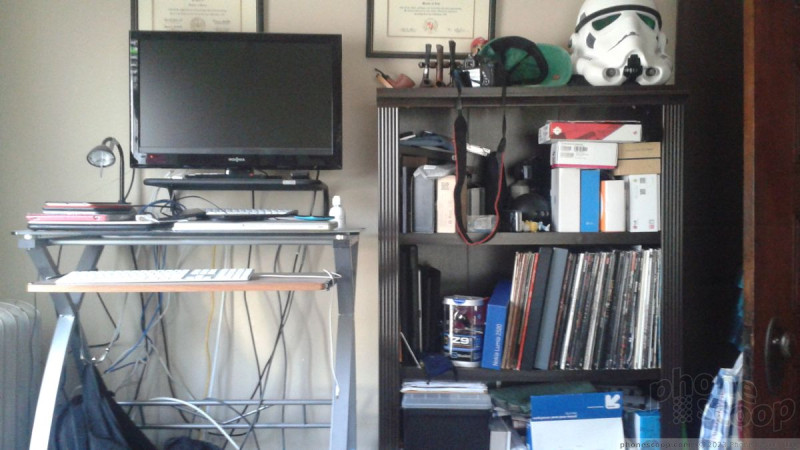










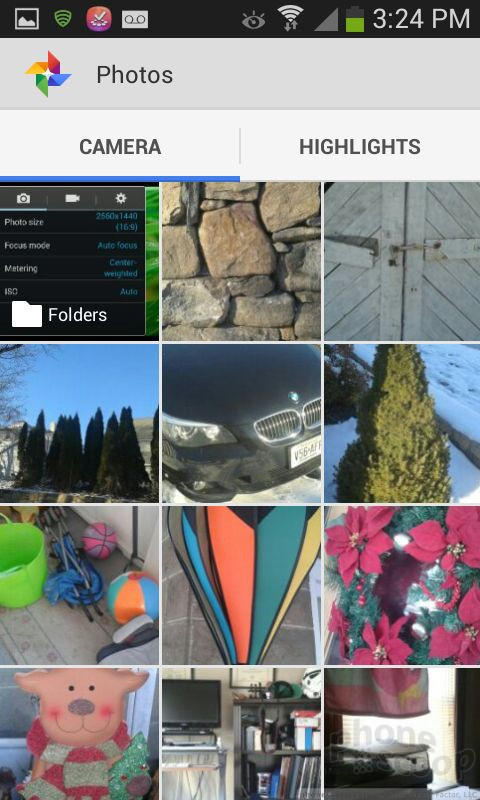








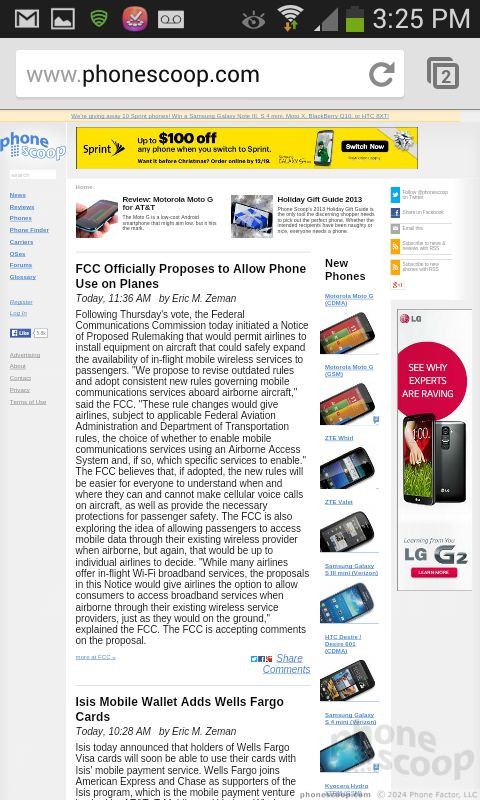




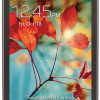 T-Mobile Announces Samsung Galaxy Light and HotSpot Pro
T-Mobile Announces Samsung Galaxy Light and HotSpot Pro
 Samsung S24 Series Adds More AI, Updates the Hardware
Samsung S24 Series Adds More AI, Updates the Hardware
 iPhone 16 Brings More Features to All Price Points, Including New Camera Control
iPhone 16 Brings More Features to All Price Points, Including New Camera Control
 Samsung Stays The Course with its Entry-Level Model
Samsung Stays The Course with its Entry-Level Model
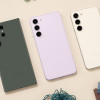 Samsung Puts its Best Camera Yet in the Galaxy S23 Ultra
Samsung Puts its Best Camera Yet in the Galaxy S23 Ultra
 Samsung Galaxy Light
Samsung Galaxy Light




